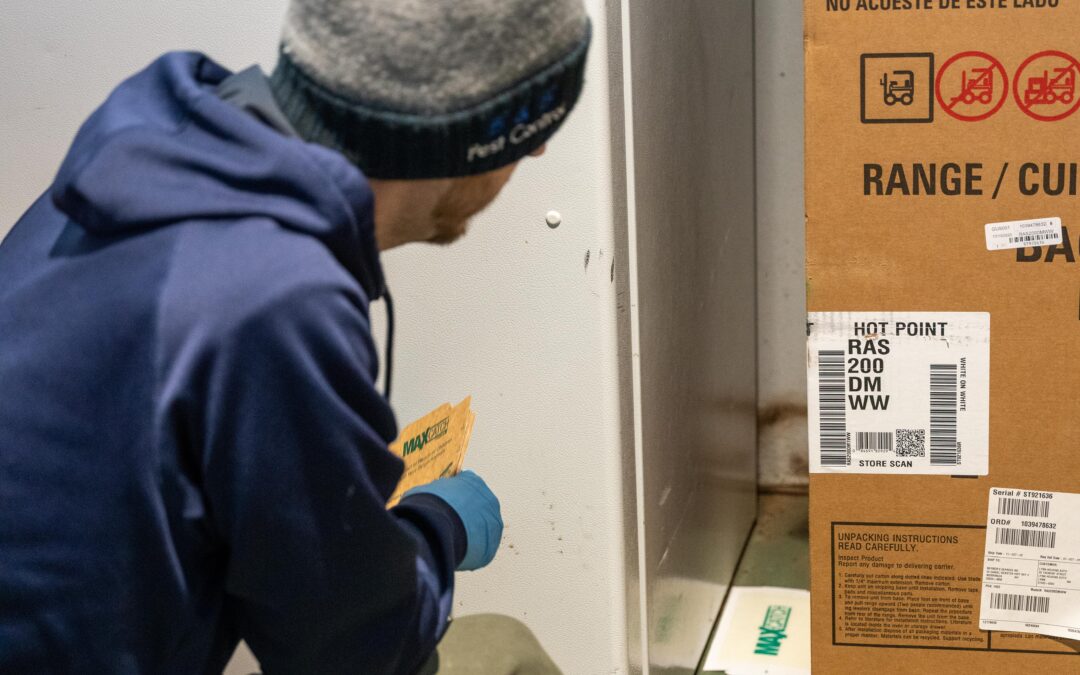Prevention is always the best strategy when it comes to pests. Here are some effective measures to keep your home protected from spring intruders:
Exterior Maintenance
Regularly inspect and maintain the exterior of your home to prevent pests from finding entry points:
- Seal cracks and crevices with weather-resistant sealant
- Replace damaged window screens and weather-stripping
- Keep a buffer zone of at least 18 inches between any wood portions of your home and the soil
Yard Work
A well-kept yard can discourage pests from approaching your home:
- Keep grass and shrubs trimmed and well-maintained
- Remove debris and standing water in gutters, yards, and near foundations
- Store firewood at a distance from your house and at least 18 inches off the ground
Interior Cleanliness
Maintaining a proper hygiene protocol within your home can significantly reduce the factors that attract pests:
- Regularly sweep, vacuum, and mop floors
- Keep food in sealed containers and promptly clean any crumbs or spills
- Dispose of garbage frequently and use bins with tight-fitting lids
Knowledge Is Prevention
Stay informed about common pests in your region and their behavior patterns:
- Research when particular pests tend to be most active and take preemptive measures
- Recognize signs of infestation early to take swift action
- Consult with a pest control professional for personalized advice and a proactive plan
What to Do If Pests Have Already Invaded
Despite your best efforts, pests may still find their way indoors. Here’s what to do if you spot signs of infestation:
Inspection
Conduct a thorough inspection of your home, focusing on common pest entry points such as:
- Doors, windows, utility penetrations, and vents
- Plumbing and appliance junctions
- Basements, attics, and other undisturbed areas where pests may harbor
Non-Chemical Intervention
Start with non-chemical methods for dealing with infestations:
- Deploy traps, pheromone baits, or light traps for flying insects
- Caulk or seal off entry points
- Eliminate pest food sources and hiding places
Professional Pest Control
Sometimes the best course of action is to seek help from a pest control professional:
- Experts can identify the pest, locate their entry points, and advise on the best treatment
- Pest control companies often offer a range of options, from eco-friendly to fully chemical
- Regular inspections from a pest control service can be key to preventing future infestations
Staying Informed: The Key to Year-Round Pest Control
Education and awareness are critical for year-long pest control:
Monitor Seasonal Changes
Be attentive to the seasonal changes in pest activity and plan accordingly:
- Watch for increased pest activity during spring, but also in the fall, when pests may seek winter shelter
- Note any weather anomalies, such as early thaws, that may influence pest behavior
Continuous Home Maintenance
Make maintenance a routine rather than a reactionary task:
- Create seasonal checklists for the inspection and maintenance of your home’s exterior and interior
- Stay ahead of structural issues that can create vulnerabilities for pests
Connect with Local Experts
Establish a relationship with a local pest control company:
- They can provide specific guidance based on the intricacies of your neighborhood and home
- Join community forums or talk to neighbors about their experiences and recommendations
Empower Yourself Against Spring Pests
By being proactive and armed with a comprehensive understanding of the common pests in the Boston area, you can take control of your home environment and keep your family safe from the potential risks that pests pose. Regular maintenance, an eye for early signs of infestation, and a partnership with pest control professionals are the cornerstones of effective pest management.
Remember, in the battle against pests, prevention is the best defense. However, a swift and well-informed response is crucial if pests do find their way in. Stay vigilant, stay informed, and keep Boston’s spring invaders at bay.
As you implement the strategies outlined in this guide, you’ll not only protect your home but also contribute to the broader effort of maintaining a healthy, pest-free community in one of America’s most historic cities.

